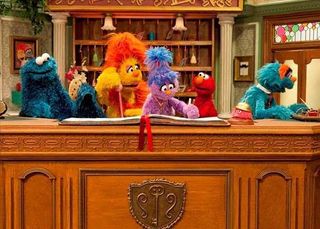‘Sesame Street’ Speaks Spanish for Univision

U.S. Latinos who want their young children to aprender, bailar and jugar (learn, dance and play) in Spanish can now do so with Elmo, Cookie Monster and several other friends from Sesame Street.
Sesame Amigos, an all-new 30-minute production from Sesame Workshop, debuted Aug. 1 on Univision. It will air Saturday mornings at 8:30 a.m. as part of the network’s “Planeta U” children’s programming block.
Sesame Amigos’s 26-episode first season will feature Sesame Street regulars such as Elmo, Cookie Monster, Bert and Ernie, as well as new friends exclusive to the show. It will engage young viewers in creative problem-solving and teamwork exercises.
Each episode of Sesame Amigos will also feature a segment in which one of the characters interacts with a Univision celebrity in a fun setting. Featured Univision celebrities include Sal y Pimienta hosts Carlos Calderon and Lourdes Stephen; Primer Impacto correspondents Tony Dandrades and Jackie Guerrido; Despierta América’s Maity Interiano and William Valdez; and Univision Deportes’ Pablo “La Torre de Jalisco” Ramirez.
Hispanic celebrities including Vahdir Derbez, Diego Luna and singer Leslie Grace will also make appearances on Sesame Amigos.
For years, Hispanic children in the U.S. have had access to Plaza Sesamo, a Spanish-language version of Sesame Street. However, that series was geared to viewers in Latin America, Univision president of programming and content Alberto Ciurana said. “While versions of Sesame Street air in more than 150 countries, Sesame Amigos will provide Spanish-speaking preschoolers the tools they need to succeed in the United States,” he said.
Added Sesame Workshop chief operating officer Steve Youngwood: “Since our founding, Sesame Street has revolutionized early learning by using media to make educational opportunities accessible to all preschoolers. Sesame Amigos will further our mission of helping kids grow smarter, stronger and kinder by reaching new Hispanic audiences with our funny, furry content and characters in ways that reflect their language and culture.”
Multichannel Newsletter
The smarter way to stay on top of the multichannel video marketplace. Sign up below.
